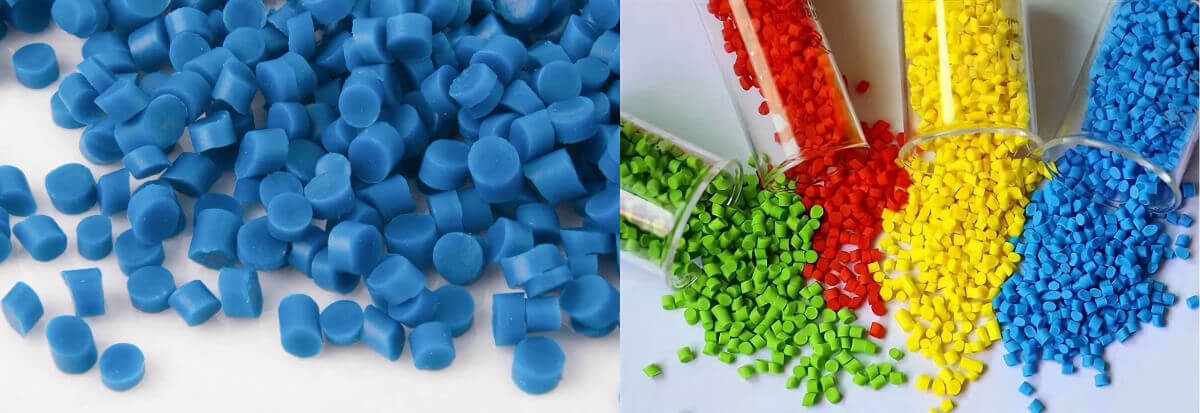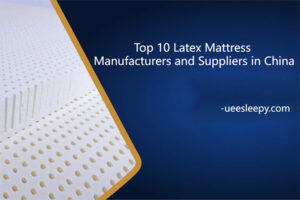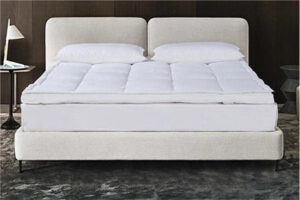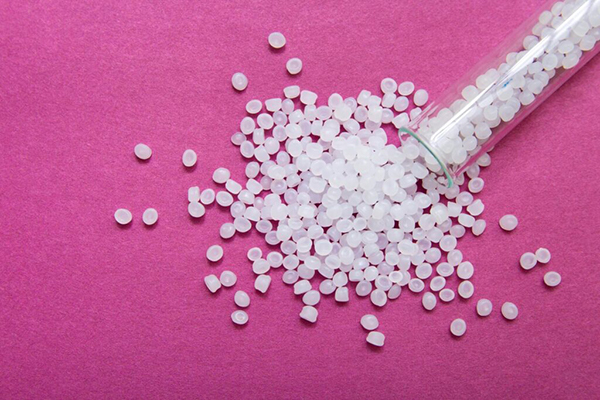Thermoplastic elastomers (TPEs) are among the most versatile plastics on the market due to their design and manufacturing flexibility. Thermoplastic elastomers combine the processing advantages of thermoplastics with their performance properties. Thermoplastic methods such as extrusion and injection molding make them relatively easy to process. There is no need for time-consuming rubber processing methods, such as vulcanization.
The nature of its molecular structure endows TPE with high elastic properties. All TPEs consist of crystalline and amorphous domains. These can be physical blends or alloys of crystalline and amorphous polymers, block copolymers, or chemical mixtures of blocks of crystalline and amorphous regions in the polymer chain.
In the case of TPEs and blends, the hard mass determines the plastic properties of the final product, including ease of processing and temperature resistance, as well as material properties such as tear strength and tensile strength or chemical resistance. Adhesion is also determined by these properties. The soft mass is responsible for the elastomeric or elastic properties. They determine material properties such as hardness and flexibility and the degree of permanent deformation.
Now, This TPE ultimate guide will tell you something about TPE, let’s take a look together.
1. Thermoplastic Elastomers (TPE): A quick definition
Thermosets, thermoplastics, and elastomers are common polymers. A quick explanation should clarify the thermoplastic elastomer affiliation.
Thermosets: Polyurethanes and epoxies are common thermosets. A characteristic of these materials is that they are insoluble and cannot be melted. They owe their strength to the cross-linked network formed by the reaction of reactive oligomers or resins with cross-linking agents under heat and pressure.
Thermoplastics: Thermoplastics are polymers that are easily melted and shaped. When heated, they melt, and when cooled, they harden. Well-known representatives are nylons, polyesters, and polyolefins. A crosslinked network is not present in these materials.
Elastomers: Elastomers are natural or synthetic polymers that are elastic. They can deform elastically under tensile and compressive stress but then return to their original, undeformed shape. The most famous elastomers are natural rubber and silicone rubber.
Thermoplastic Elastomers: TPEs combine the properties of thermoplastics and elastomers: they are materials that process like plastics but have the excellent performance characteristics of rubber. Compared to conventional rubber processing, TPE processing saves time and resources.

2. Advantages of TPE
- The high degree of design freedom
- Injection molding and extrusion make thermoplastic processing easy
- Processing window width
- Multi-component processing possible
- Shorter cycle times and higher productivity
- Reduce finished part cost
- Less energy consumption
- TPE characteristics: fully recyclable
- Good Coloring
- Low permeability
- Excellent thermal performance and material stability
- Wide hardness range: Shore OO, Score C, Shore A, and Shore D
- Excellent electrical insulation properties
- Wide application
3. Disadvantages of TPE
- Shear sensitive
- Limited use in high-temperature applications
- Higher raw material cost per kg compared to thermosets
- Low resistance to aromatics
- Shrinkage
4. Types of TPE
The following are several types of TPE:
1)SBC / TPE-S / TPS
TPE materials made of styrene block copolymers (SBCs) are the largest and most versatile. They consist of hard styrene mid-block and soft end-blocks derived from raw materials such as butadiene or isoprene and have a unique heterogeneous structure. In more general terms, the structure of the heterogeneous compound can be described as a poly(styrene-b-elastomer-b-styrene) structure. It is obtained by block copolymerization.
SBCs are widely used because they mix well with many materials, including additives, resins, and fillers. Among their characteristics are high elasticity, tensile strength, and abrasion resistance. The product is colorless and has a wide hardness range. They can be designed to function over a wide range of temperatures and exhibit varying degrees of viscosity and shock absorption. Depending on the chemical structure of the elastomer blocks, this thermoplastic elastomer has different properties. This allows for a great degree of customization.
The main types available are as follows:
- SEP : Styrene-Ethylene-Propylene Block Copolymer
- SEPS : Styrene-Ethylene-Propylene-Styrene Block Copolymer
- SEEPS : Styrene-ethylene-ethylene-propylene-styrene block copolymer
- S*EEPS*-V : S*-ethylene-ethylene-propylene-S* block copolymer (S*: cross-linkable hard block)
- SBS : Styrene-Butadiene-Styrene Block Copolymer
- SEBS : Styrene-Ethylene-Butene-Styrene Block Copolymer
- SIS : Styrene-Isoprene-Styrene Block Copolymer
In addition, there are unique vinyl-bond-rich TPEs that can replace PVC without the use of plasticizers:
- V-SIS: SIS rich in vinyl bonds
- V-SEPS: SEPS rich in vinyl bonds
- V-SEEPS: SEEPS rich in vinyl bonds

2)TPO / TPE-O
Thermoplastic Polyolefin (TPO) is a blend of uncrosslinked EPDM rubber and polyolefin. They are characterized by high chemical resistance and strength as well as low density. These materials can be easily processed by extrusion and injection molding.
The product is very light and extremely flexible to use. In applications requiring high levels of plastic durability and abrasion resistance, they are used instead of standard copolymers. These include, for example, the dashboard of a motor vehicle.
3)TPU/TPE-U
In thermoplastic polyurethanes (TPU), diols or polyols are polyaddition-reacted with polyisocyanates to form polyurethanes. One characteristic of polyurethanes is the urethane group. The characteristics of a TPU can vary over a wide range. Depending on the degree of crosslinking and/or the isocyanate or OH components used, they can be used as elastomers, thermoplastics, or rubber substitutes.
Typical properties of TPU include high ductility and tensile strength. They have excellent wear resistance and excellent mechanical properties. Oxygen and ozone are not a problem for them.
4) TPC/thermoplastic elastomer-E
Thermoplastic polyester elastomers (TPC) are linear block copolymers with crystalline and amorphous segments that give TPE materials elasticity and ease of processing. Due to the rigidity of the crystalline segments, TPC is impact resistant over a wide temperature range. They are highly resistant to heat, chemicals, and aging.
In addition to the described properties, TPC also has good electrical insulating properties. As a result of their fatigue resistance and tear strength, they are also used in the automotive industry and other industries for hoses, cables, and bellows.
5)CUP / PEBA / TPE-A / TPA
Polyamide block copolymers (TPA) are thermoplastic elastomers based on polyester-amide, polyether-ester-amide, or polyether-amide block copolymers. Polyether and polyamide blocks have different properties depending on their type, number, and length.
TPA can be used in demanding applications requiring high temperature and oil resistance. They are also somewhat flexible at low temperatures and are resistant to wear, abrasion, and impact. Their weather and chemical resistance is also excellent.
6)TPV / TPE-V / EA
Thermoplastic vulcanizates (TPV) are compounds of polypropylene and EPDM that are dynamically vulcanized during the compounding process. These plastics combine rubber-like properties with the easy and cost-effective processing of thermoplastics.
TPVs are increasingly replacing traditional thermoset vulcanizates. Due to their high-temperature resistance, they are increasingly used in applications requiring high heat resistance up to 130 degrees Celsius. Since they also have good chemical and oil resistance, the engine compartment of a vehicle is also an application area for these materials.
7) Soft PVC (TPVC)
Polyvinyl chloride (PVC) is a polymer widely used in plastics. PVC is produced from vinyl chloride by chain polymerization. Amorphous thermoplastics are both brittle and hard. By adding plasticizers, it becomes processable and thus suitable for a variety of applications. It has a wide range of applications, from construction to flooring to insulation.
There are two types of PVC: soft and hard. Plasticized PVC contains high concentrations of primary and polymeric plasticizers. In the production of PVC, plasticizers are used to make it flexible. On the other hand, their extensive use is accompanied by considerable disadvantages as, on the one hand, they impair the durability and recycling of flexible PVC products. On the other hand, plasticizers are also considered a health hazard because they can leach from materials and enter the environment and food.
8) Acrylic fiber
Acrylic is a general term for chemical substances with acrylic groups such as acrylates and polymers of these substances. Acrylic groups are the basis for chemical crosslinking. Acrylate gets its name from the pungent smell typical of acrylic acid. Soft acrylic TPE is a new series of acrylic block copolymers, produced using anionic living polymerization technology, which combines various (meth)acrylates into AB or ABA-type block copolymers.
This controlled polymerization process allows it to remain exceptionally clean with minimal residual monomers or oligomers compared to traditional acrylic polymers produced using free radical polymerization.
9) Bio-based TPE
Bio-based TPEs are products in which at least part of the polymer or monomers are composed of materials produced from renewable raw materials such as sugar cane or corn. The remainder of the polymer may consist of carbon from fossil sources. Difficulties remain in producing custom 100% bio-based materials such as thermoplastics polyhydroxyalkanoates (PHA) and polysaccharides.
The synthesis of bio-based TPE is mainly based on biological and biochemical processes. It should be noted that the term “biobased” does not necessarily mean “biodegradable”. Bio-based TPEs are biodegradable, but often this is not the case.
5. Is TPE the best material for my product?
This largely depends on your industry and application. There are some well-known mixes, such as those used in phone cases or fitness wearables. In more complex cases, application development specialists will relay your requirements to materials scientists who will create specific formulations and material blends to generate the properties you require.
Unless you’re a polymer expert, it can be difficult to know which type of TPE is best for your use case. Based on the product description and the material properties required for your application, an application design specialist can recommend a TPE.

6. When should TPE be considered?
Generally speaking, when the material you need can be:
Easy to manufacture
Bonded to a rigid polymer
Shaped into a unique design
Colored
Produced to specific hardness, toughness, or surface feel requirements
Recyclable
Chemical-resistant or flame retardant
Noise and vibration dampening
One of the first things your application needs is hardness. The versatility of TPEs allows them to be produced in a wide range of durometer levels, from gummy bears to the durometer of bowling balls. Another important consideration is surface feel and friction. Some products require a grippy surface, such as the handle of a fishing rod.
Others require a smooth, virtually friction-free feel, such as phone cases that you want to slip in and out of your pocket easily. Additionally, consider how you want your product to behave when stretched; there are many stretch properties and tests that can be conducted to achieve the right degree of flexibility.
7. Characteristics of TPE
The following are the relevant characteristics of TPE:
1) Hardness
A thermoplastic elastomer’s hardness is an important selection criterion. A Shore durometer determines the Shore value, which is a characteristic value of TPE hardness. This instrument measures the depth of a depression in a material produced by a given force on a standard indenter. Using different spring forces and indenters, ISO 7619-1 recognizes twelve different hardness scales.
The two most common scales used to measure the hardness of TPE materials are Shore A (blunt tip, moderate spring) and Shore D (sharp indenter, more spring). Shore C represents the middle ground between Shore A and Shore D.
2) Temperature resistance
Different thermoplastic elastomers are required for different applications. The duration and type of stress, as well as the shape of the part, all affect the requirement for maximum temperature resistance. An extreme example of high heat resistance requirements is the under-hood components of cars and trucks.
3) Tensile properties
The elongation properties of TPE are determined using various test methods. The breaking strength of a thermoplastic elastomer is determined by stretching it until it breaks. Tensile strength at break is determined in the testing of standardized specimens and is usually given in megapascals (MPa). An elastomer with a high breaking strength does not break as easily when stretched as an elastomer with a low breaking strength.
In application, thermoplastic elastomers must also generally be tear resistant. Common units of measurement are psi (pounds per square inch) or kN/m (kilonewtons per meter). Tensile modulus is a material parameter that describes the proportional relationship between stress and strain when a solid deforms in linear elastic behavior. In this strain test, resistance to strain is measured at a series of strain points.
Another important parameter is elongation at break. It indicates how far an elastomer can be stretched before breaking and is given as a percentage of the original length. For soft elastomers, this value may exceed 1,000%.
4) Compression deformation
The compression set of the TPE material is also very important. An elastomer’s ability to withstand prolonged, constant compression and subsequent release is measured by this property. The compression set is expressed as the percentage of deflection at which the elastomeric sample does not return to its original thickness after the release of the compressive load. A compression set is measured at constant deformation according to DIN 53 517, ISO 815, or ASTM D 395.
To determine this quantity, a cylindrical sample is compressed by a certain percentage and stored at a certain temperature for a certain time. A value of zero percent means that the body has fully recovered its original thickness, which is impossible in reality. A compression set of 100% means that the body has completely deformed and cannot be recovered.
Seals made of elastomers must be able to withstand permanent deformation. Therefore, materials with low compression sets are more suitable for sealing applications.
5) Shrinkage
Molded parts made of TPE materials shrink during cooling. While shrinkage is usually only on the microscopic scale, it can affect the molding and disassembly process as well as the appearance and subsequent precise fit of the molded part, with uneven shrinkage being especially problematic.
Therefore, shrinkage deserves special attention and must be considered in mold design and process flow. Because polymers vary in their elastic and shrinkage characteristics, it is recommended that processors obtain information about the material from the TPE manufacturer.
6) Security
Multiple safety and regulatory standards must be met by thermoplastic elastomers. Specific requirements vary by application of the material. Products made from medical-grade TPE can be sterilized using a variety of processes and contain only a very low percentage of extractable.
7) Other attributes
Depending on the application, other properties of the TPE must be considered when selecting the material. Chemical resistance, UV stability, and electrical properties are among them.

8. TPE processing
The following is about the method of TPE processing:
1) Injection molding
Injection molding is by far the most important technology for processing TPE materials. The main reasons are the high productivity and clean, residue-free processing of injection molding. In injection molding, molten plastic is injected into a mold so that the final product is an exact copy of the mold.
The behavior of TPE in this process is consistent with that of other thermoplastics in the hot runner. Co-injection and insert molding processes are equally suitable for this application. Injection molding is primarily used to produce solid parts, such as tools or components, which can be produced in high volumes with a high degree of precision.
2) Squeeze
Extrusion is one of the most popular processes for manufacturing pipes, profiles, etc. from thermoplastic elastomers. In this continuous process, the material is forced into shape through a die with a cross-section of the material. TPE pellets are fed into the hopper of the extruder, where they are heated and melted by the rotating helical screw.
The screw conveys the molten plastic through the mold to create a continuous length of the mold with the same profile, which is then cooled. Unlike injection molding, extrusion often produces semi-finished or intermediate products that must be further processed. Using this process, you can achieve very complex cross-sections with a very good surface finish and a high degree of design flexibility.
3) Extrusion blow molding
Another important process for forming profiles is TPE extrusion blow molding. Extrusion involves the extrusion of molten plastic into a mold. To create the desired shape, the air is blown into the mold or tool. Single-screw extruders are dominant here.
However, other extruders are also used, for example, triple-screw extruders. Extrusion is even used to produce complex hollow parts such as bottles and containers. In addition to producing profiles, extrusion is also used for sheets, tubes, and other shapes.
4) Other thermoplastic elastomer processing methods
In addition to the above-mentioned injection molding, extrusion molding, and extrusion blow molding methods, other methods can also be used to process TPE – although in some cases to a lesser extent. These include two-component (2k) processing, melt calendering, thermoforming, heat welding, and compression molding.
9. Application
TPE is suitable as a material for applications requiring a flexible or elastic material. They offer advantages over traditional thermoset rubbers and plasticized thermoplastics in terms of cost, quality and safety, and toxicity. Due to their diverse mechanical properties and different processing technologies, TPEs have an extremely wide range of applications.
Adhesives, Coatings & Sealants
Compound interest
Consumer goods
Electronic product
Industrial building
Medical
Flexibility
Oil modification
Sporting Goods and Footwear
3D printing: A new application for TPE materials is 3D printing, which has not previously been possible with rubber-like materials. Flexible TPE filaments are used here to produce flexible or customizable components, such as smartphone covers. Thermoplastic polyurethane (TPU) is the most commonly used 3D printing material. On the other hand, for special applications such as processing PLA, acrylonitrile butadiene styrene (ABS), and polycarbonate (PC).

10. Supervision
The following is regulatory information about TPE:
1) Food and Drug Administration
The U.S. Food and Drug Administration (FDA) imposes strict requirements on food produced in or imported into the United States. The food industry uses a variety of food-contact plastics that must comply with FDA requirements.
2) United States Pharmacopoeia
The United States Pharmacopeia (USP) classifies plastics used in pharmaceuticals and medical devices into six biocompatibility classes.
3) EU Directive/Regulation
A number of EU regulations and directives address requirements for plastics, such as Directive (EU) 2019/1904 on single-use plastics. Another example is EU Directive 93/42/EEC. It contains specific requirements for the safety, quality, and suitability of medical devices, including plastics used in medical technology.
4) ISO 10993
ISO 10993 is a series of ISO standards for the biological evaluation of medical devices. It is especially relevant to medical device manufacturers and testing laboratories. The purpose of this standard is to evaluate the biological evaluation concerning the compatibility of the materials used with the human body. This means testing not only products but component materials used to manufacture medical devices, including medical-grade TPE.
5) ASTM test
ASTM International is a United States-based international organization for standardization that publishes technical standards for goods and services. Use of ASTM standards is voluntary, except in the publicly funded sector of the United States. Although voluntary, many manufacturers conduct ASTM testing of their thermoplastic elastomers and other products because it is in their own interest to ensure comparability and give customers a better understanding of the product.
11. History of Thermoplastic Elastomer/Rubber (TPR/TPE)
The first thermoplastic elastomer was introduced in 1959, and since then, numerous new variants of this material have been produced. Six major TPE groups are found commercially; styrene block copolymers (TPE-S), polyolefin blends (TPE-O), elastomeric alloys, thermoplastic polyurethanes (TPE-U), thermoplastic copolyesters (TPE -E) and thermoplastic polyamide (TPE-A).
12. What is the difference between thermoplastic elastomers and thermoset elastomers?
Elastomers generally fall into two broad categories:
- Thermoplastic
- Thermosetting
Structure
Thermoplastic elastomers are materials that repeatedly soften/melt when heated and harden when cooled. Most thermoplastics are soluble in certain solvents and burn to some extent. Softening/melting temperatures vary by polymer type and grade. In order to avoid degrading, breaking down, or igniting thermoplastics, care must be taken when handling them.
Most thermoplastic molecular chains can be thought of as individual, intertwined threads, similar to spaghetti. When heated (e.g. for molding), a chain slips, causing the plastic to flow. After cooling, the chains of atoms and molecules are firmly fixed again. When subsequently heated, the chain will slip again. There is a practical limit to the number of heating/cooling cycles a thermoplastic can withstand before appearance and mechanical properties are affected.
During processing, thermoset elastomers become permanently insoluble and infusible. It is this chemical crosslinking that is the main difference between thermoset and thermoplastic systems. Natural and synthetic rubbers, such as latex, nitrile rubber, mixable polyurethanes, silicones, butyl rubber, and neoprene, acquire their properties through a process called vulcanization and are typical thermoset elastomers.
When thermosets cure or harden, crosslinks form between adjacent molecules, creating a complex interconnected network. These cross-bonds prevent the individual chains from slipping, which prevents the plastic from flowing when heated. A thermoset elastomer will degrade rather than melt if too much heat is applied after cross-linking. This behavior is somewhat similar to that of a hard-boiled egg: further heating does not return the egg to its liquid state, it just burns.
13. What are the advantages of TPE over thermoset rubber?
- Design flexibility
- Reduce manufacturing costs
- Shorter processing time
- Scrap is fully recyclable
- Product consistency
- Blow Moldable
- Thermoformable
- Reduce energy consumption
- Processing is easier
- Better control of product quality
- A wider range of product densities
- Lower cost per finished part
- More environmentally friendly

14. TPE FAQ
The following are TPE common questions:
1) How is TPE made?
In the simplest terms, traditional TPE types are made by chemically or mechanically combining hard materials with soft materials.
2) Is TPE safe?
Yes, sippy cups and medical tubes can be made from them because they are safe. TPEs can even be formulated with flame-retardant properties if the application requires it. The material is non-allergenic and does not cause rashes. The Food and Drug Administration classifies most TPEs as Generally Recognized As Safe (GRAS).
3) Is TPE waterproof?
Yes, TPE can be mixed in a way that makes the material absolutely waterproof. In fact, TPE is often used in gaskets that protect portable speakers and other electronics from water damage. But here’s a twist – if your application requires water-absorbing properties, TPE can also be designed to absorb water.
4) Can TPE be colored?
Yes, you can color TPE, which is a major advantage. The natural color of TPEs is usually cream, white, beige, or translucent, making them very easy to color. Black, blue, and clear are popular choices, but there are few color restrictions when using TPE.
5) Can you melt TPE?
If we’re being nuanced, thermoplastic elastomers technically don’t melt. When heated, TPEs soften and change into a form that allows the material to flow freely, but they do not become liquid as they do when melted. Due to its ability to flow freely in a near-molten state, TPE can be molded into any shape you desire.
6) Is the TPE chemically resistant?
The short answer is it depends, TPEs can be formulated to be chemically resistant and customized to meet demanding application needs. Understanding the chemical resistance of a TPE comes down to the final formulation.
7) Is TPE environmentally friendly?
We, humans, live in a rapidly developing world, moving towards a more modern way of life every moment. This lifestyle is supported by the ever-innovating products we buy and use every day. Businesses are adapting to this growing need to innovate. Today, however, innovation is not the only consideration for companies to give body and shape to products, products must also adapt to the environment as much as possible.
This is because our health is directly affected by the type of environment we are in. This means that if pollutants are present in our environment, they also circulate in our bodies, putting us at risk of contracting disease. Thermoplastic Elastomer (TPE) is a new type of product widely used in fields such as the automotive and home appliance industries. But as eco-conscious and responsible consumers, we ask the same question. Is TPE environmentally friendly?
The answer to this question is yes. TPE is environmentally friendly.
8) Reuse and recycling
TPE can also be made from biopolymers, which are natural polymers produced by living organisms. TPE can be made from other plastics made from natural resources, such as sugar cane. TPE can also be made from post-consumer recycling like ocean plastics such as fishing nets, and turned into materials for other commodities. Most thermoplastic elastomer products are also recyclable according to Plastic Recycling Code 7.
9) Lightweight
Thermoplastic elastomers are also used to make products lighter. Since silicone sinks, TPE is a better choice if your application requires the material to float. In addition, auto parts and equipment made from TPE make vehicles lighter and more fuel-efficient. The lighter TPE can replace the glass or other heavier materials, allowing you to load more inventory on delivery trucks. This weight reduction allows trucks to move more fuel efficiently and often requires fewer trucks on the road.
10) What is medical grade TPE?
Not surprisingly, the healthcare market places additional regulatory requirements on those creating medical products and devices. Producing TPE is a very controlled and precise chemical and manufacturing process, which allows you to manufacture different levels of risk and medical-grade TPE. For example, the process of manufacturing a medical product that can be placed in the mouth will include steps to ensure that patients do not eat or inhale any harmful substances.
The medical tubing made of TPE can also withstand a wide range of fluids without degrading. The good news is that medical-grade TPE can be manufactured in any grade required for the product and/or application. Reduce risk throughout the production process to create different medical grades. The stricter the requirements, the more scrutiny, and testing are involved in the creation of the TPE.
How useful was this post?
Click on a star to rate it!
Average rating 5 / 5. Vote count: 1
No votes so far! Be the first to rate this post.








